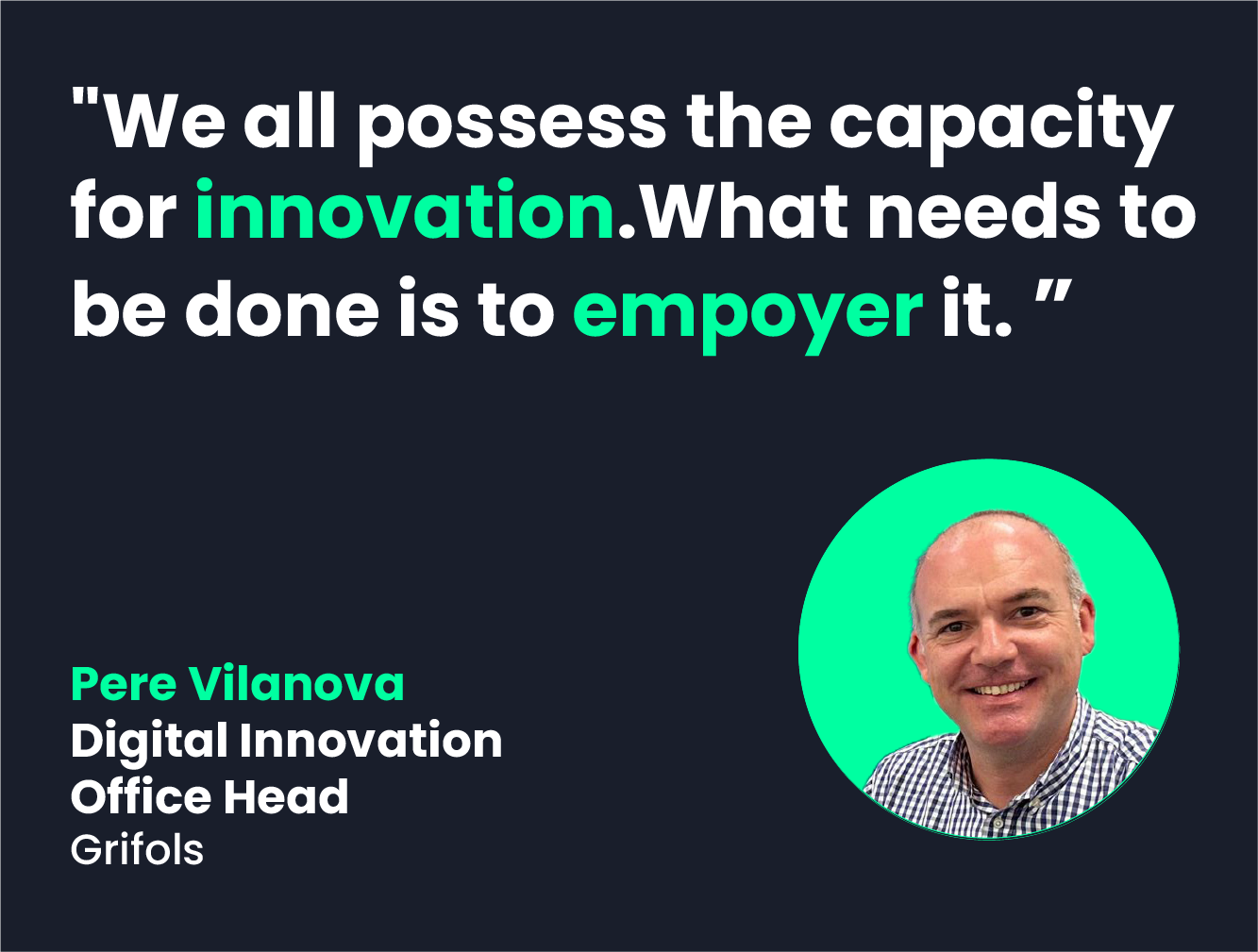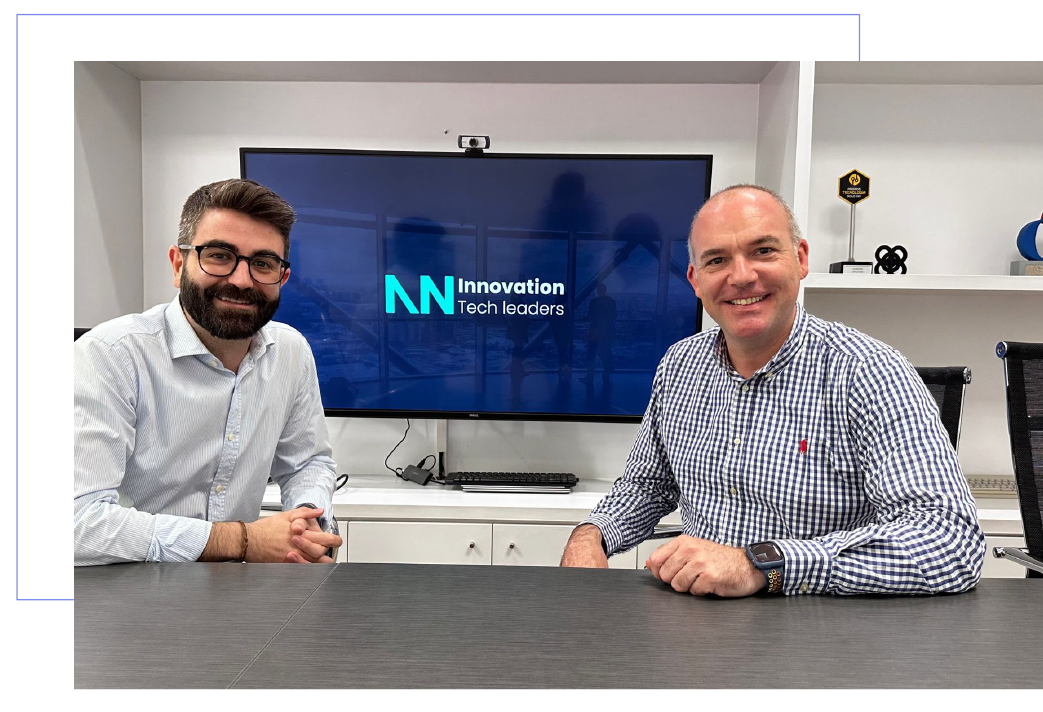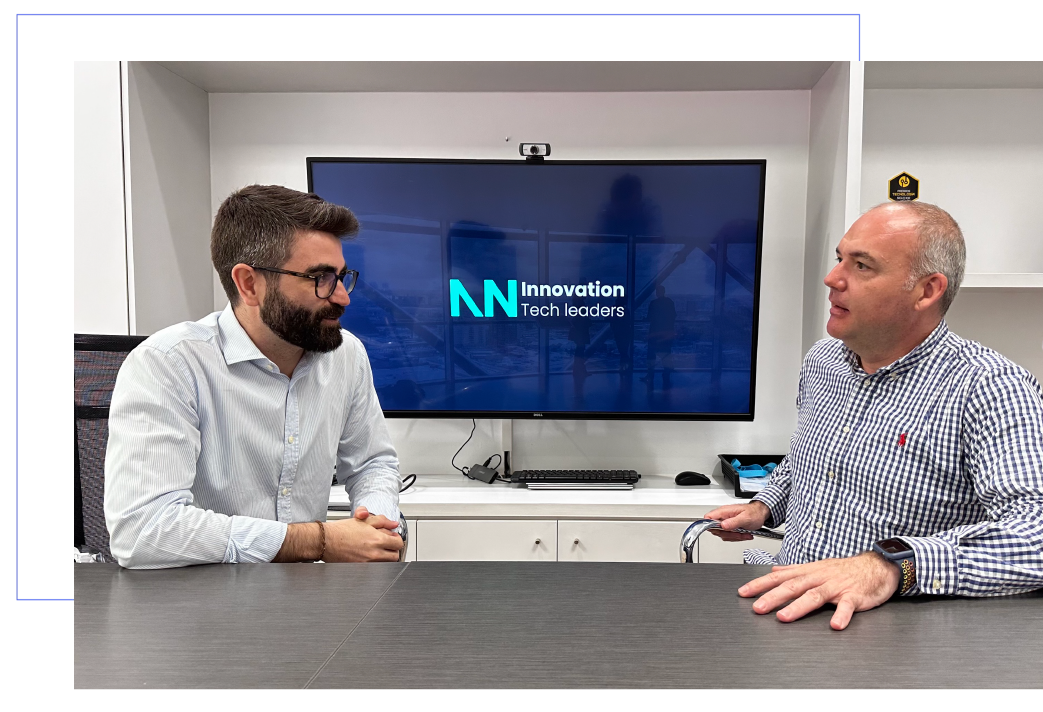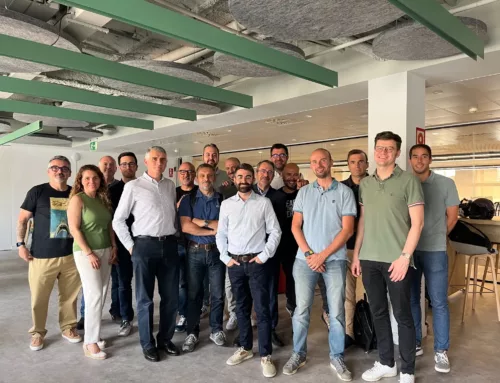The Digital Innovation Office Head at Grifols believes that thanks to digital technologies, it is possible to transform the culture of companies, positively impacting business processes and generating real and tangible value.

Born in Barcelona, he is a computer engineer. He has been part of Grifols for over two decades, a global leading company in the healthcare sector with a 114-year history. Since 2019, he has been leading the digital innovation area at Grifols. His role involves leading digital initiatives and projects based on Grifols’ Technological Innovation and Digital Transformation Strategy.
From your position, what is your role within the organization?
I believe that my role is more focused on the people and culture aspect rather than the technology itself. From the Digital Innovation Office, our role is to bridge people within the organization through technology. In my opinion, lasting changes are only brought about by culture. If we look at societies, they only embrace change when it truly impacts culture. Moreover, since we are in a business environment, this digital innovation must have a real and measurable positive impact on the business.
When approaching these innovation initiatives, how is the connection between culture and technology built? How do you construct that bridge?
Innovation can be perceived as a state of mind, it is subjective. In other words, there is no absolute rule for innovation. We all have the capacity to innovate; what we need to do is foster it. It’s a bit like the physical aspect, you have to train and work on it.
Thanks to digital technologies, it is possible to transform the culture of companies, positively impacting business processes and generating real and tangible value. Technology is an excuse, it’s the car that takes you places.
There are two things that kill innovation in a company. The first is basing it solely on technology, where technology becomes an end in itself. And the second, which I believe is even worse than the first, is internalizing it. That is, thinking that innovation comes from a single source that you have to expand by adding more and more people. No, it’s quite the opposite. I believe that innovation areas should be very small but with many followers who believe in the cause, as well as extensive internal and external networks to stay in constant contact. We are now starting to call this “Digital Bridges.”

So, Pere, how do you identify new opportunities with those digital bridges you mentioned?
We tone down the pompousness of technology a bit. We encourage people to let go of their fears so that instead of us being in front of them, they allow us to stand by their side and go together.
I believe that more and more IT directors, CEOs, or similar profiles are starting to undergo a mindset shift, being more open outwardly with topics like Open Innovation. The idea is that we have a technologically mature population, which calls for us to position ourselves by moving from a technological focus to a knowledge focus, where technology is not the end goal, but rather the means to provide services.
How do you support people within the organization?
I always tell my teams that we are three things above all: Explorers, coaches, and sherpas. From the perspective of technological innovation and digital transformation, we have to help people understand that they can make that change and overcome the natural fear of the unknown.
We seek the mountain, convince you that you can climb it, and when you’re convinced, we climb together. Why? Because by accompanying people, we gain three things: Trust, transparency, and leadership, which ultimately become our calling card.
Being in such a regulated sector like pharmaceuticals, how do you think innovations or new initiatives can be carried out with ecosystem partners?
Innovating in a heavily regulated environment is challenging but not impossible. It’s important to remember that there are people behind every process. Motivation, interests, and needs of individuals are key when it comes to innovation.
In my opinion, every regulation has an element of interpretation. It’s similar to a law and sometimes can be used as an excuse to resist change. So, when we bring someone who may be more shielded by regulations into a more relaxed environment where things can be done in a smaller format, and we establish a win-win situation for all parties involved, it’s unlikely that you can stop the innovation process because they will have already seen its potential benefits.

Related to this last point, what do you think should be the aptitudes or skills that a person should have to lead a unit or area like this?
I believe that people skills, humility, and a desire to learn are important. I’m not just talking about technology, but rather about processes and services. Soft skills are also important, and we shouldn’t lose sight of the benefits that an organization needs to survive.
As an example, if you show a resistant area of the company, let’s say, a gamification technology like virtual reality, and you use that showroom to break barriers, create a relaxed atmosphere, and relieve stress, that showroom becomes part of the journey to achieve a mindset that allows that technology to enter and impact the organization’s benefits.
In this last segment, regarding innovation topics, is there any experience you can share with us?
I would highlight the case of automation with RPAs (Robotic Process Automation). With this technology, you can reduce resistance by having a robot that doesn’t do everything but rather handles a part of the process, thus helping to create a great team. If one part of a process has automations that make it more efficient and bring benefits, it should go hand in hand with other lateral processes that don’t hinder progress but instead create a balance. In my opinion, the key is the human-machine alliance because we must not forget that behind every automation, there are experts in business processes who are crucial for the entire ecosystem to function in a perfectly balanced, efficient, and sustainable way.
With the vast amount of information available, how do you try to stay updated on new technologies and trends?
When there are so many information nodes, there are many possible paths. We shouldn’t worry about all of them, but rather choose one and follow it.
Excessive input can lead to overload, so when I start selecting the information I like the most, it’s because I want to ensure that I choose what I consider essential for me. And if there’s room for less relevant things, well, that’s okay too, we can include them.
And finally, the last question. Tell us a little bit about Pere Vilanova. What do you like to do to disconnect from the day-to-day?
It’s interesting, but I enjoy trying out technology from a perspective of enjoyment, understanding, and experimentation. Not doing the same things as in my professional life, but from a more relaxed and personal standpoint. I relax with that, spending time with my wife, and doing classic activities like going out and walking.


